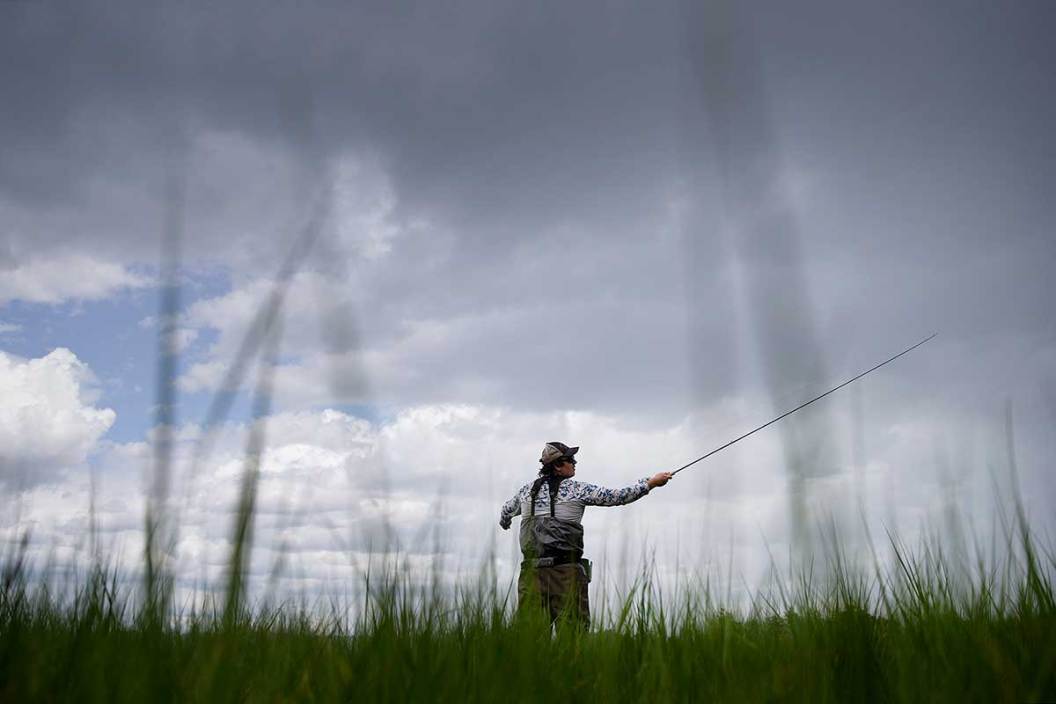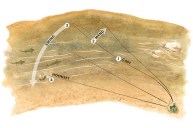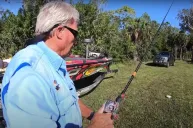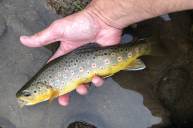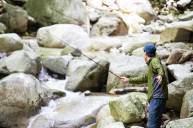When I first started fly fishing several years ago, I couldn't help notice how much farther my father could cast compared to me. It was like there was some invisible barrier, and no matter how strong my back cast was and how quick my forward cast snapped, keeping me from reaching the distances he was. That is until he taught me about the double haul cast. Now, for most avid trout anglers who fish narrow mountain streams with dry flies, this method might not serve you well. However, if you love fly fishing in the occasional open freshwater lake, and especially if you like to pursue saltwater fish on the fly, this method is crucial to reaching great distances and deceiving your target fish species.
This simple pull of line from the non-casting hand can be difficult to master at first, but once you get it down, it will absolutely change how you fly fish—and for the better. Even on smaller streams, most of my casts incorporate some form of the double haul cast.
What is the Double Haul, and When Should You Do It?
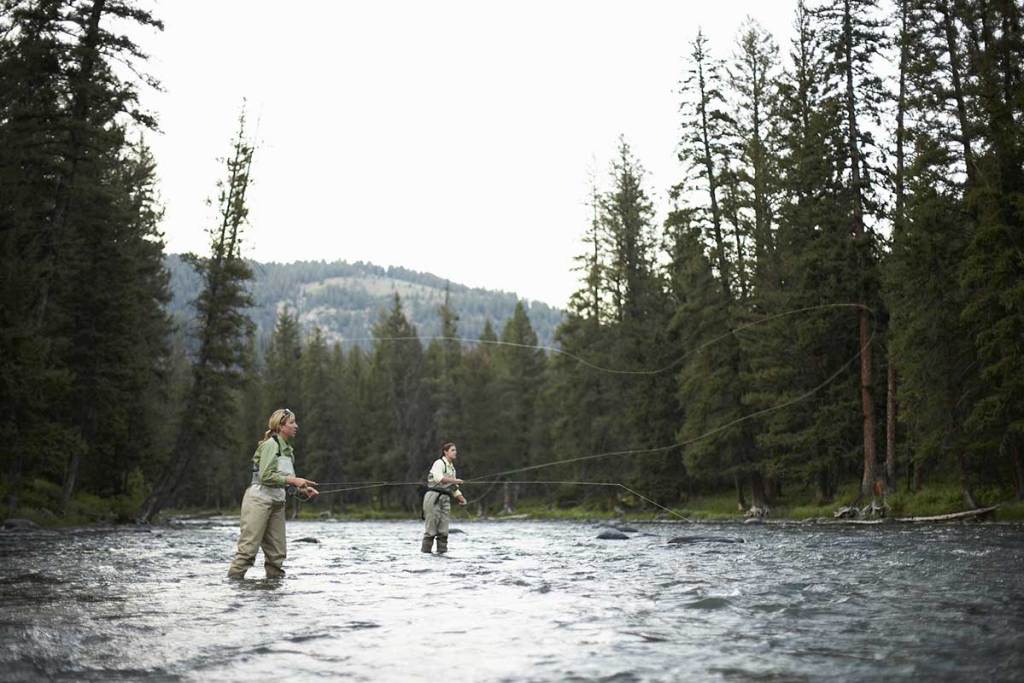
Stewart Sutton/Getty
A "haul" refers to a pulling of the line with the line hand, corresponding with either a back or forward cast. Doing one pull instead of two can be called a "single haul" or simply a "haul."
All fly casts should have what is commonly referred to as a "D-loop," which allows a transfer of energy to your fly line without the need for excess force being used by the angler. With a single or double haul, that D-loop becomes tighter and more efficient, allowing the angler to cast more accurately at greater distances. It also gives you the ability to cut through wind.
As you become more comfortable applying a single haul and transition into utilizing the double haul cast, you'll naturally feel the rod bend more. The line will speed up as it is released, creating more kinetic energy and thus reaching farther distances. With sought-after saltwater fish such as permit, tarpon, and bonefish, being able to cast 40-plus feet is not only helpful, it's imperative. These types of fish are very wary, and the sight of a boat or a human wading will send them in the opposite direction, or keep them from biting altogether. Utilizing a double haul cast will let you reach out and cast your flies perfectly in front of them, allowing you to remain undetected, and they will feel comfortable enough to strike your fly.
How to Perform the Double Haul Cast
The video above helps break things down in visual form really well, and we'll also attempt to describe it in words to help you along.
As soon as your wrist begins to bend on your back cast, or as an old fly fishing guide told me, "when your rod reaches the 1 o'clock position," you should begin to do a power drag from your line hand. Just like with a traditional fly cast, you're going to want to come to an abrupt stop at the 2 o'clock position, at which point your hands will come close together as you allow your line to create the D-loop from behind you.
Making sure you aren't bending your wrist too much, you'll begin your forward cast while simultaneously performing your forward power drag with your line hand, creating the second haul. When your rod reaches the 10 o'clock position, you will again come to an abrupt stop like a traditional cast, allowing the line to flow quickly through your line hand. Timing is key with the double haul method, and this will require some practice. Poor timing on one or both hauls can cause misguided and short casts that will smack the water.
Additional Double Haul Casting Tips
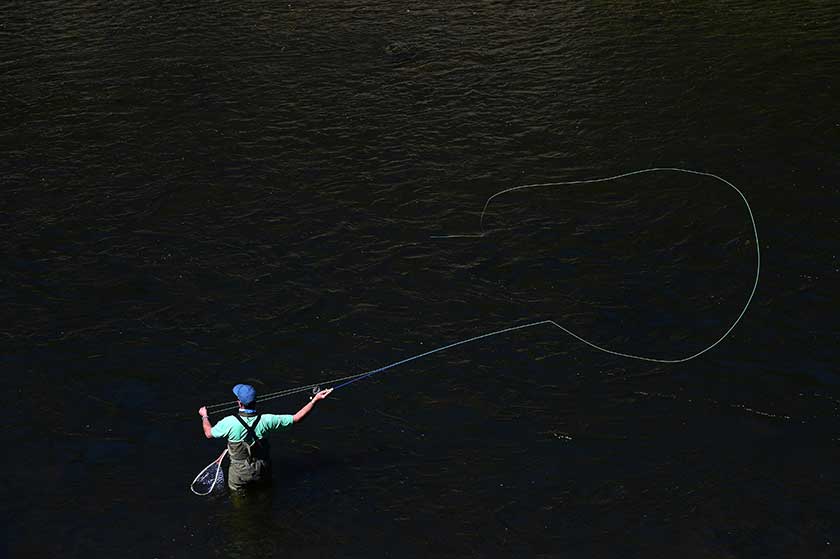
Matt McClain/The Washington Post via Getty Images
Many first time fly anglers will want to jump right into double haul casting, but this is a big mistake. Practicing the double haul will not fix any of the issues with your traditional casting and will likely complicate your form all together. Master the fundamentals first, then work on your single haul before moving to double haul casting. Start to slowly incorporate a single haul into all of your false casts. This will develop a habit of creating that motion with your line hand, and it will become second nature. Once this feels comfortable and you notice the tighter D-loop and increased energy in your casts, you can begin incorporating the second haul on your forward cast.
When I was learning to double haul cast, I stood in an open field with one of my fly fishing mentors, who put a hula hoop out at about 30 yards. I tied a piece of yarn to the end of my fly line and focused on making accurate casts within the hula hoop, working on the timing of my double haul. The best advice? Practice, practice, practice. Learning the double haul cast takes time and is not something you will pick up right away. Slowly incorporating it into your traditional casts, while doing some field practice off the water, will help you learn it properly.
